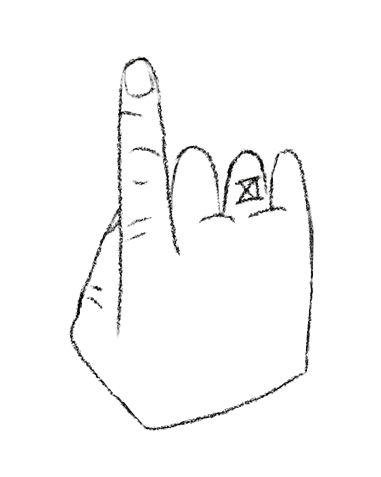
FORM
a custom corporate typeface
ABCDEFGHIJKLMNOPQRSTUVWXYZ_1234567890!@$#%^&*()=
SAMPLE:
Sans-serif fonts, also known as "grotesque" or "gothic" fonts, have a history that dates back to the 18th century. The term "sans-serif" comes from the French word "sans," meaning "without," and refers to the absence of small projecting features called "serifs" at the end of strokes in the letters. The first recorded usage of a sans-serif font can be traced to 1816 when it was used in a London-based type foundry for commercial printings.
7
weights
Light 300 Regular 400 Regular Italic 400 Semibold 600 Semibold Italic 600 Bold 700 Bold Italic 700
Form Light
Form Regular
Form Bold
Form family samples.
Form Light
Fonts are the garments donned by words, granting visual form to our spoken and written language. Our typographic choices, much like our clothing preferences, can reveal a lot about us. From the modern sleekness of sans-serif typefaces like Helvetica or Arial, to the classic elegance of serifs like Times New Roman, every font embodies a unique character and tone. Fonts subtly communicate beyond the literal meaning of the words they form, evoking emotions, setting moods, and even influencing decisions. Have you ever wondered why most books utilize serif typefaces? It's because the small strokes ('serifs') at the ends of the characters guide the eye along the lines of text, improving readability. Meanwhile, digital media often favors sans-serif fonts for their clean, simple aesthetic. Uniquely, script typefaces, imitating handwriting, convey a personal touch, often used for invitations or titles. Experimental, stylized fonts, like those imitating typewriters or graffiti, can instantly transport us to different eras or contexts. Font creation, a blend of art and science, is a meticulous process, requiring an understanding of aesthetics, culture, and technology. It's a labor of love, shaping not just words, but also how we perceive those words, contributing to the rich tapestry of our visual communication.
Form Regular
Fonts are the garments donned by words, granting visual form to our spoken and written language. Our typographic choices, much like our clothing preferences, can reveal a lot about us. From the modern sleekness of sans-serif typefaces like Helvetica or Arial, to the classic elegance of serifs like Times New Roman, every font embodies a unique character and tone. Fonts subtly communicate beyond the literal meaning of the words they form, evoking emotions, setting moods, and even influencing decisions. Have you ever wondered why most books utilize serif typefaces? It's because the small strokes ('serifs') at the ends of the characters guide the eye along the lines of text, improving readability. Meanwhile, digital media often favors sans-serif fonts for their clean, simple aesthetic. Uniquely, script typefaces, imitating handwriting, convey a personal touch, often used for invitations or titles. Experimental, stylized fonts, like those imitating typewriters or graffiti, can instantly transport us to different eras or contexts. Font creation, a blend of art and science, is a meticulous process, requiring an understanding of aesthetics, culture, and technology. It's a labor of love, shaping not just words, but also how we perceive those words, contributing to the rich tapestry of our visual communication.
Form Semibold
Fonts are the garments donned by words, granting visual form to our spoken and written language. Our typographic choices, much like our clothing preferences, can reveal a lot about us. From the modern sleekness of sans-serif typefaces like Helvetica or Arial, to the classic elegance of serifs like Times New Roman, every font embodies a unique character and tone. Fonts subtly communicate beyond the literal meaning of the words they form, evoking emotions, setting moods, and even influencing decisions. Have you ever wondered why most books utilize serif typefaces? It's because the small strokes ('serifs') at the ends of the characters guide the eye along the lines of text, improving readability. Meanwhile, digital media often favors sans-serif fonts for their clean, simple aesthetic. Uniquely, script typefaces, imitating handwriting, convey a personal touch, often used for invitations or titles. Experimental, stylized fonts, like those imitating typewriters or graffiti, can instantly transport us to different eras or contexts. Font creation, a blend of art and science, is a meticulous process, requiring an understanding of aesthetics, culture, and technology. It's a labor of love, shaping not just words, but also how we perceive those words, contributing to the rich tapestry of our visual communication.
Form Light
ABCDEFGHIJKLMNOPQRSTUVWXYZ
abcdefghijklmnopqrstuvwxyz
0123456789 $£¥€¢ — @!?&.,
Form Regular
ABCDEFGHIJKLMNOPQRSTUVWXYZ
abcdefghijklmnopqrstuvwxyz
0123456789 $£¥€¢ — @!?&.,
Form Semibold
ABCDEFGHIJKLMNOPQRSTUVWXYZ
abcdefghijklmnopqrstuvwxyz
0123456789 $£¥€¢ — @!?&.,